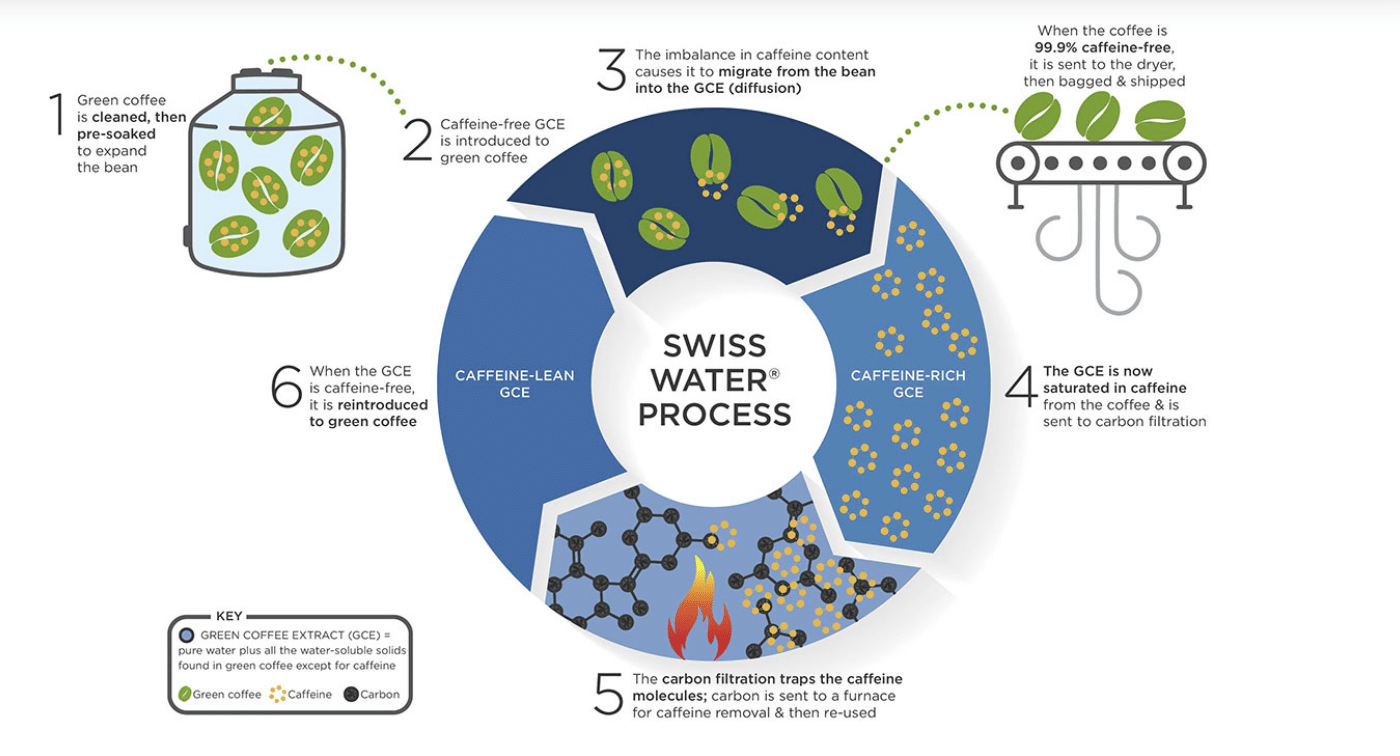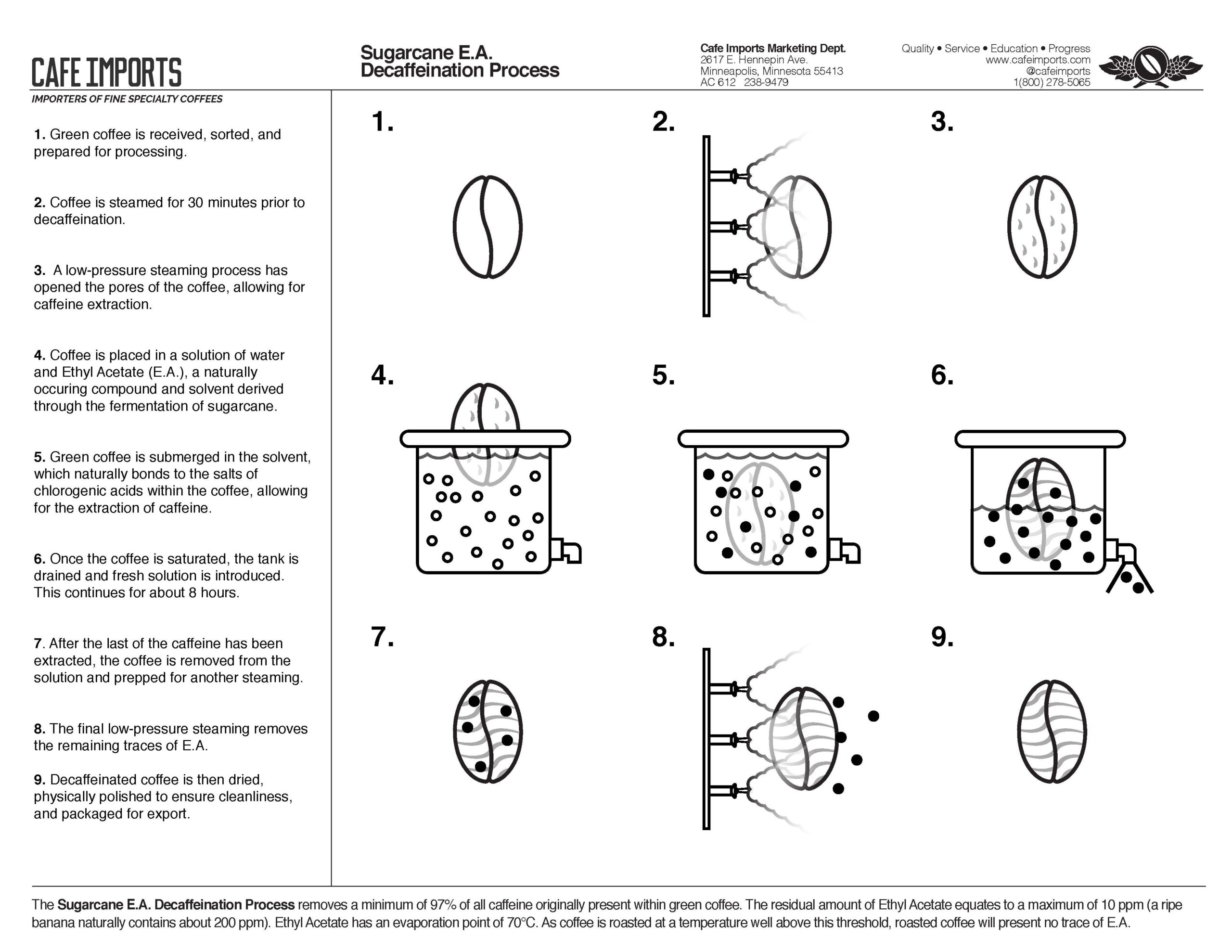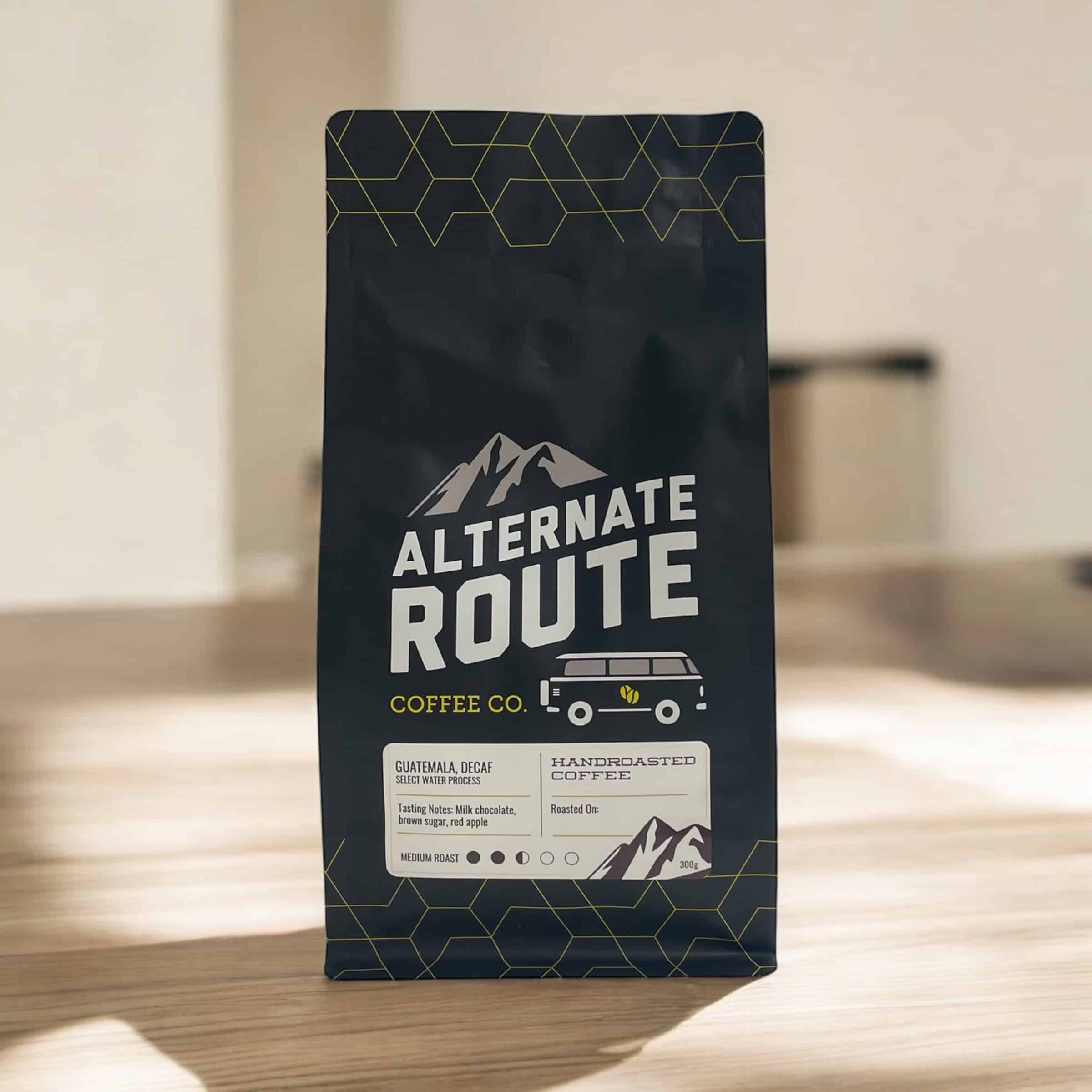Decaf coffee has long been the subject of debate in the coffee world. One side praises its caffeine-free convenience, while the other dismisses it as a subpar alternative to the vibrant flavors of regular coffee. But as demand for quality decaf increases, paired with advancements in decaffeination methods, this divide is narrowing.
Is the ridicule still warranted, or does decaf offer its own unique appeal? Let’s explore the differences and discover how specialty coffee enthusiasts are redefining both cups.
What is Decaf Coffee?
Decaf coffee starts as a regular green (unroasted) coffee bean but then undergoes a process to remove most of its caffeine content. While it’s impossible to achieve 100% caffeine-free coffee, decaf significantly reduces the caffeine level. For comparison:
- A regular 8oz cup contains roughly 95–200mg of caffeine.
- A decaf equivalent contains only about 2–5mg of caffeine.
How is Coffee Decaffeinated?
Decaf beans are processed through a variety of methods, each impacting the flavor and eco-friendliness of the final product:
-
Swiss Water & Select Water Process:
This chemical-free method uses osmosis and water to remove caffeine while preserving natural flavor compounds. Highly regarded for its sustainability, it retains a clean, balanced flavor. The Swiss Water Process and the Select Water Process, decaffeinates coffee using only water, temperature, and time. First, green coffee beans are soaked to release caffeine and flavor compounds. This water is filtered to remove caffeine, creating a flavor-rich solution called Green Coffee Extract (GCE). New beans are then soaked in the GCE, which draws out only caffeine without stripping flavor. The process is repeated until the beans are almost fully caffein free

*Image from Swiss Water [https://www.swisswater.com/pages/coffee-decaffeination-process#stepbystep]
-
Sugar Cane Process (Ethyl Acetate):
A natural compound derived from sugarcane is used to extract caffeine and enhance the coffee’s sweetness. Ethyl acetate is a plant-based solvent commonly sourced from fermented sugarcane, often cultivated near coffee-growing regions, helping to minimize environmental impact. The decaffeination process starts by steaming the coffee beans to expand their pores. Then, they are immersed in an ethyl acetate solution, which selectively attaches to the caffeine. Once the caffeine is removed, the solvent is evaporated, leaving the beans decaffeinated.

*image from Cafe Imports [https://www.cafeimports.com/north-america/blog/ea-decaf/]
The methods mentioned above represent modern advancements that aim to address the long-standing flavor complaints associated with decaf.
How Decaf Processing Affects Flavor
Historically, decaf had a bad reputation for tasting flat, lacking the complexity that coffee lovers associate with freshly brewed beans. This was partly due to commodity-grade coffee being used for decaffeination, as decaf demand didn’t warrant high-quality beans.
However, times have changed. Specialty-grade decaf now competes with its caffeinated counterpart by offering rich, nuanced flavors. Some interesting traits include:
- Sweetness is more pronounced in decaf. Caffeine is naturally bitter, and its removal allows the coffee’s inherent sweetness to shine.
- Approachable Profiles: Many decafs boast comfort flavors, such as chocolate, nutty, and nougat notes, while others incorporate fruity brightness like lemon, berries, or orange.
Roasting Challenges with Decaf
Because decaf beans are more porous and structurally fragile after decaffeination, they roast faster and darker. This means careful roasting techniques are required to avoid burnt or bitter notes. Well-roasted decaf, however, unlocks flavors that challenge any preconceptions about caffeine-free coffee.
Decaf vs. Regular Coffee for Different Lifestyles
Your choice of decaf or regular isn’t just about taste; it depends on your lifestyle and preferences.
- Morning Rituals vs. Late-Night Sipping
For early risers or those needing a kickstart, regular coffee is ideal thanks to its stimulating caffeine content. But for individuals who want to unwind with a cup in the evening, decaf is perfect.
- Cutting Back on Caffeine
For health reasons or sensitivity to caffeine, many coffee enthusiasts are turning to decaf to maintain their daily coffee rituals without the jitters.
- The Social Aspect
Celebrate both! A household or café filled with both decaf drinkers and hardcore espresso fans can now enjoy equally flavorful brews.
Brewing Tips for Decaf vs. Regular Coffee
Brewing decaf requires some minor adjustments since it extracts differently than regular coffee due to its porous structure. Here are a few pro tips for decaf brewing success:
- Grind Size:
- If your decaf brews too quickly and tastes weak, try using a finer grind size.
- If it’s bitter or over-extracted, go coarser.
- Roast and Ratio:
- Light to medium roasts retain more sweetness and complexity, making decaf more enjoyable.
- Increase your brew ratio slightly for a fuller-bodied decaf experience (e.g., use 1g coffee to 15-16g water for pour-over)
- Espresso Adjustments:
- Extend the extraction time by a few seconds to compensate for decaf’s faster brewing properties.
Whether you’re using pour-over, drip coffee, or espresso, these small tweaks can make a big difference in flavor.
A Fun Challenge – Decaf vs. Regular Blind Tasting
Want to put your palate to the test? Try hosting a blind coffee tasting at home. Brew a selection of both decaf and regular coffees without labeling them. See if you or your friends can truly tell the difference.
Spoiler alert: Many people choose decaf as their favorite due to its richer sweetness!
If you’re curious, visit one of our tasting events. We often include decaf among the lineup of eight coffees, and you might be surprised by your preferences.
Decaf and Regular Coffee Are Both Worth Celebrating
Ultimately, the main difference between decaf and regular coffee boils down to one thing: caffeine content. But in terms of quality, taste, and enjoyment, both can stand on their own when sourced, roasted, and brewed with care.
At Alternate Route Coffee, we believe that coffee is personal. No matter your preference (regular, decaf, espresso, or drip), the best cup of coffee is the one that makes you happiest.
Curious to get started with specialty decaf? Check out our newest decaf release, a Guatemala Select Water Process, with notes of brown sugar, orange zest, milk chocolate, butterscotch, dolce de leche and red apple
Pour yourself a cup and enjoy coffee your way.
Alternate Route Coffee has been crafted with a level of passion, commitment, and attention to detail that few can imagine. Why? Because at Alternate Route Coffee, we know it matters. From our humble beginnings as Alberta’s first ‘roastery on wheels’, we learned that only through passion and relentless commitment can you truly create something special. This commitment to a truly special product is our promise to you.
Located just beside the Edmonton International Airport in Alberta, Canada, Alternate Route Coffee Co. is a small batch, specialty coffee roaster blending traditional techniques with modern innovation to bring you a unique coffee experience. The roastery includes a small coffee bar, retail section, as well as a beautiful custom tasting room where we host intimate coffee tasting and brewing events. Be sure to check out Alternate Route Coffee Co. store hours and we look forward to seeing you soon.

